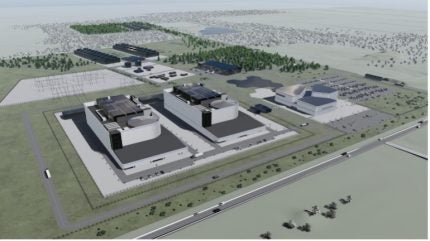
Estonia estimates that construction of a NPP will cost approximately €120m ($124m) in public funds over the next decade. The estimates were made in 2023 when the nuclear energy working group was tasked with making a comprehensive report. Antti Tooming, Deputy Secretary-General at the Ministry of Climate and head of the nuclear energy working group, said the state still uses these figures, although they will become more precise over time. The estimate is both preliminary and conservative and it is not yet known who will build the plant or what technology will be used.
The figures suggested €73m would be spent in the coming years on nuclear regulation and education and research programmes. The costs would mostly relate to personnel expenses, such as salaries for the necessary staff. Another €54m would be needed for the development of emergency response and technical capabilities.
“Our calculations also showed that by the third or fourth year of starting the nuclear programme, state revenues would significantly increase as real activities begin, such as hiring people. By the fourth year, it is already evident that potential tax revenues exceed the costs to the state,” said Tooming. Once the NPP is operational, revenues should exceed costs by €19m he added. “From the state’s perspective, this is clearly a profitable project,” he affirmed. These estimates do not take into account any potential state support measures for nuclear energy.
Estonia’s parliament (Riigikogu) adopted a resolution (431 OE) in June 2024, supporting the adoption of nuclear energy in Estonia. Fermi Energia was founded in 2019 by Estonian energy and nuclear energy professionals specifically to develop deployment of small modular reactors (SMRs) in Estonia. In July 2019, the company launched a feasibility study on the suitability of SMRs for Estonia’s electricity supply and climate goals beyond 2030. This followed a financing round from investors and shareholders.
Four SMR designs were included in the feasibility study: Moltex Energy’s SSR-W300, Terrestrial Energy’s IMSR-400, GE Hitachi’s (GEH’s) BWRX-300 and NuScale’s SMR. In February 2023, Fermi Energia, selected GEH’s BWRX-300 for deployment in Estonia by the early 2030s. BWRX-300 is a 300 MWe water-cooled, natural circulation SMR with passive safety systems, based on GEH’s ESBWR boiling water reactor design and licensing.
In January, Fermi Energia submitted an application to Estonia’s Ministry of Economic Affairs & Communications to start the state spatial planning process for a 600 MWe NPP based on two BWRX-300 SMRs which would complement Estonia’s existing and planned renewable energy resources. In August 2024, Fermi Energia CEO Kalev Kallemets , said nuclear power should receive funding similar to wind farms.
Fermi Energia said the application marks six years of planning, including 71 studies, collaboration with 32 partners, and a total investment of €1.4m in research and analysis. While Fermi Energia is the only party currently expressing concrete interest, no construction agreement has been made.
“Our current approach is not to make a definitive assessment at this stage, as the final decision on whether this specific technology will be used in Estonia will only be made in the construction permit application phase,” said Tooming. “At that stage, the technology will be assessed, and the exact location will also be determined. Based on that, more precise evaluations can be made. Therefore, it does not make sense to plan this in advance. As a state, we have maintained from the beginning that we are keeping this option open — not only considering Fermi Energia but allowing other private sector players to take initiative as well.”






